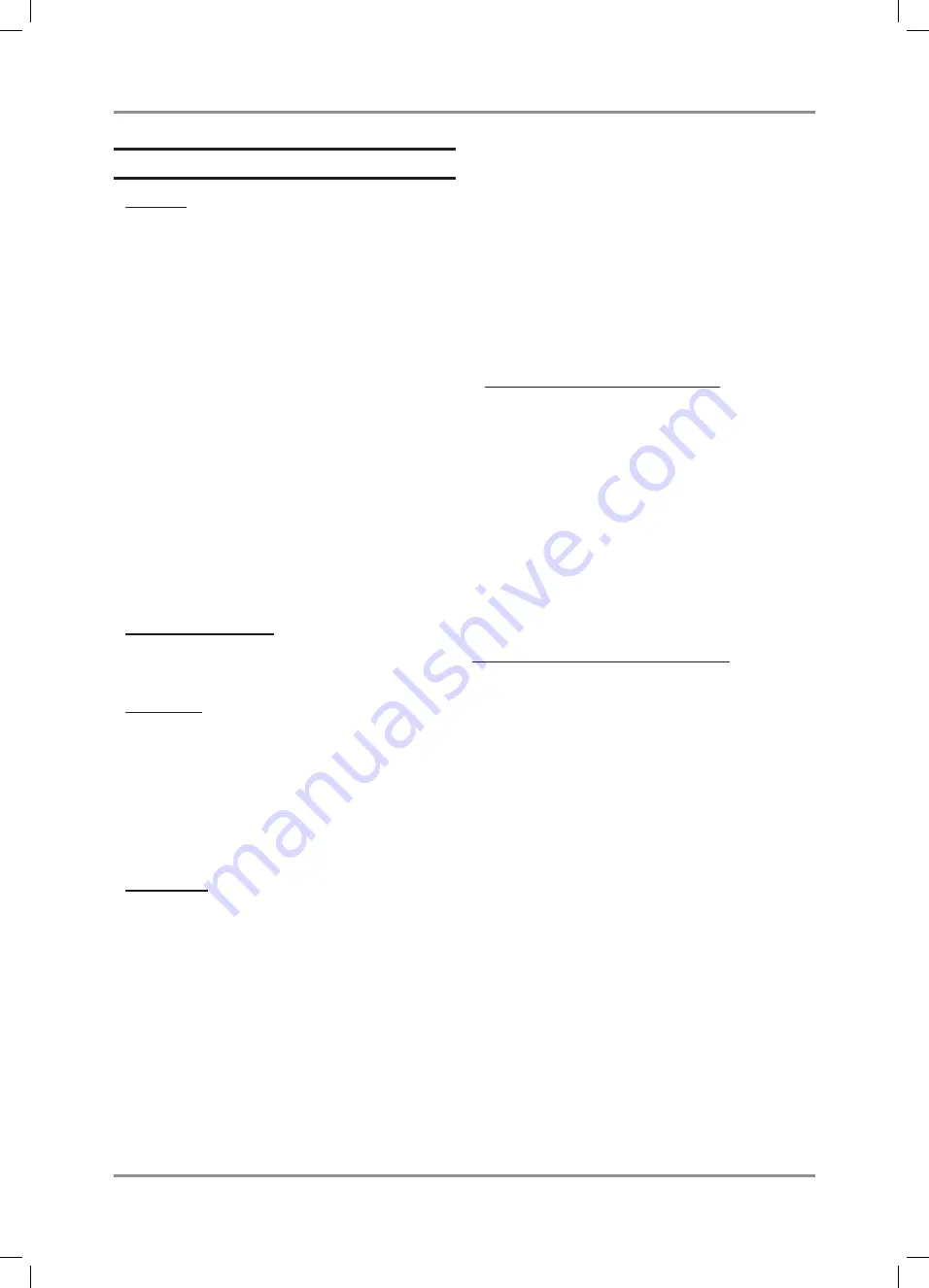
29
EGES14020T man v.190417
Operating Instructions
Maintenance
Maintenance Procedures Rationale
Daily:
1. Check pump oil level- The compressor pump
sight glass (see JF, fig.6) shows the oil level on a
non-running unit. It should be no lower than half
way on the sight glass. If it is lower, add oil until it
is at least half way up the sight glass.
2. Check for unusual operation and correct before
damage occurs- Listen for hissing, knocking or
ringing sounds and visually check anything that is
out of the ordinary in the usual operation of your
compressor/generator/welder. Investigate and
correct any anomaly before operating.
3. Check safety valve operation- Pull the ring on
the safety valves (JC, fig.6) -with the system
de-pressurized- to ensure they are not stuck and
will function properly if there is an unwarranted
pressure build-up.
4. Drain the air receivers- Condensation will
accumulate in the tanks and piping traps daily,
and should be drained at least once a day using
the the petcocks on the bottoms of each tank
(Z, fig.1). This is done to reduce corrosion of the
tanks from the inside. Always wear protective eye
wear when unscrewing the petcocks to drain the
tanks.
After first 5 hours
1. Change engine oil- Oil used for breaking in the
engine will carry higher concentrations of debris
and should be removed before it causes damage.
Weekly:
1.
Clean compressor pump air filter (see I, fig.1)-
This will ensure that no dirt or heavy particulate
that has lodged in the filter makes its way further
into the compressor's valve assemblies and that
the air intake is not impeded unduly.
2. Clean external parts of compressor and engine-
This helps to ensure proper cooling and helps
prevent corrosive moisure from gathering on
critical parts.
Monthly:
1. Check and tighten fasteners. Bolts, nuts and
other connections may loosen with time under
a regime of continuous vibration. Parts may be
lost and air system components could fail with
catastrophic results.
2. Inspect the entire air system -both on this unit and
downstream- for leaks using soapy water: do this
to ensure the compressor does not run beyond
its duty cycle due to air leaking somewhere in the
system.
3. Check tension on all the belts: done primarily to
ensure the belts do not fail pre-maturely due to
slippage, but also to ensure connections between
the engine the generator as well as the pump
are as efficient as possible. Tighten the belts as
needed to ensure they do not slip.
4. Inspect all the various lubricants for
contamination: do this to ensure that harmful
deposits do not build up in the oil and damage
internal components of either the compressor
pump, the reduction gearing, or the engine.
5. Check all unloading lines for leaks. Air leaks in
unloader lines will cause unloaders and pilot
valve to chatter and could cause short cycling of
motor.
Every 3 Months Or 1000 hours
(whichever comes first):
1. Change the oil: this is done to ensure that the
compressor has both the proper oil level and
that the oil in the machine continues to lubricate
moving parts, not deteriorating past factory
specifications.
2. Un-screw and remove compressor pump reuseable
screen oil filter (see JI, fig.6) and clean it. This will help
prevent damage to the pump due to its inability to filter
dirty oil.
3. Inspect the valve assemblies: done to prevent
premature valve failure and carbon build-up that
can form in older valves. Clean out impurities that
interfere with efficient operation of the pump.
Storage Of This Equipment:
Before storing this Compressor/Welder/Generator for
a prolonged period of time;
F
Use an air blow gun to clean all debris from the
unit.
F
Shut off the engine'
F
Drain air tank tank pressure, clean air filter, drain
old oil and replace with new oil.
F
Cover the unit to prevent dust and moisture from
collecting on it.
F
If compressor will be unused for extended period
of time (7 days or more) disconnect battery to
extend battery life and remember to properly
charge it before next use.



































